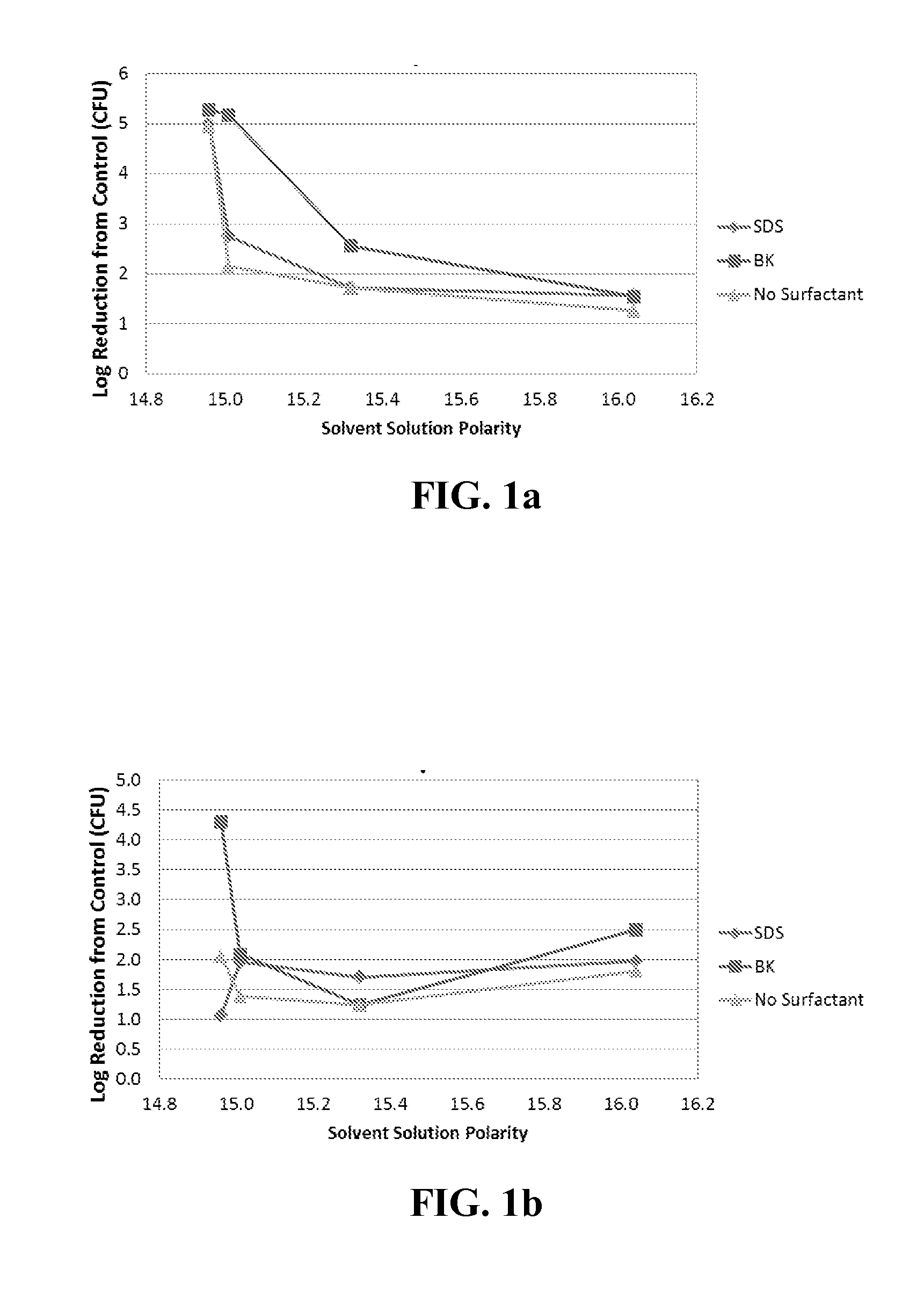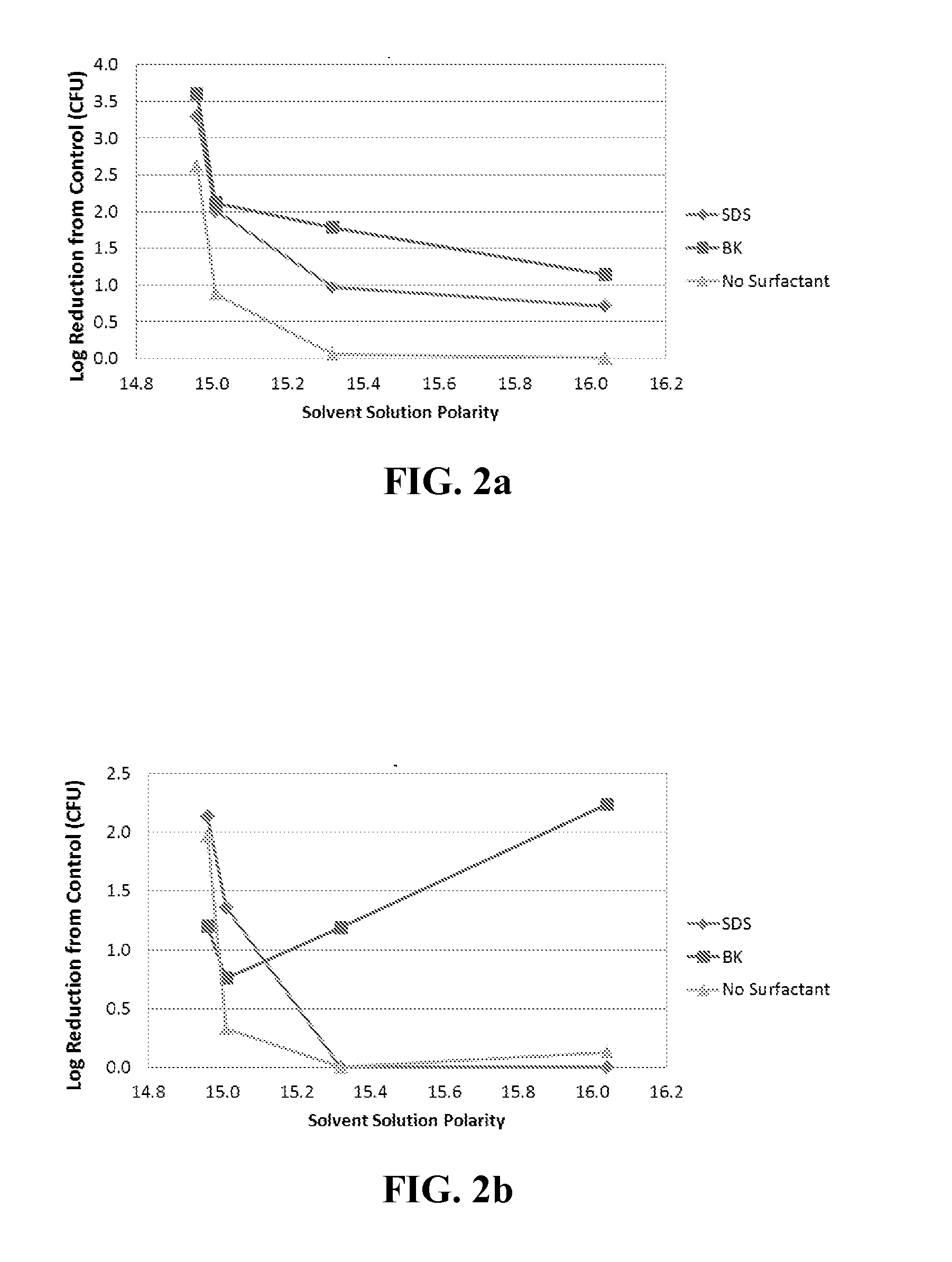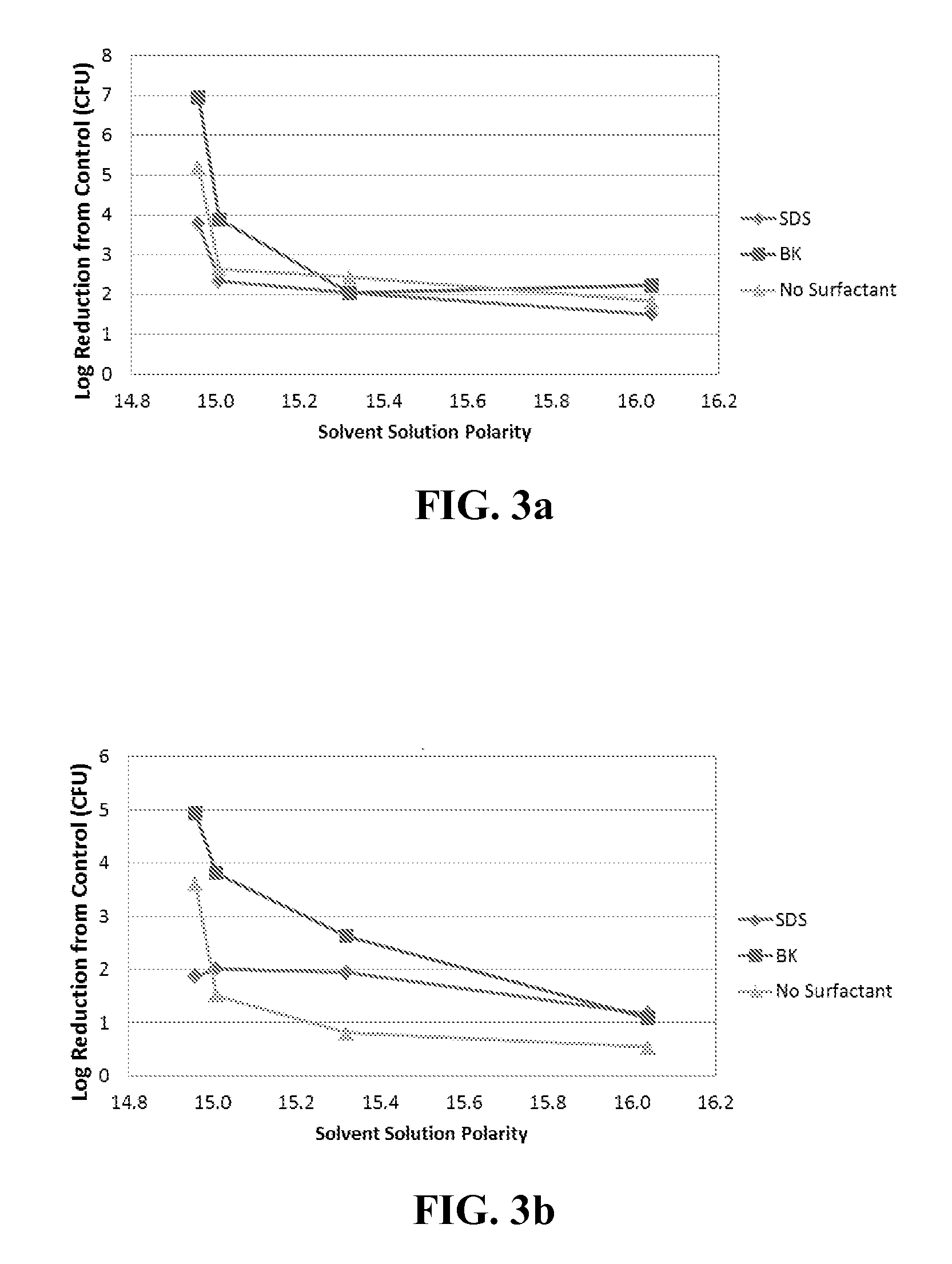High Osmolarity Antimicrobial Composition Containing One or More Organic Solvents
a technology of organic solvents and compositions, applied in the field of high osmolarity antimicrobial compositions, can solve the problems of difficult removal and/or elimination of bacteria in biofilms, impractical for many applications, and difficult to treat bacteria, etc., to achieve the effect of reducing the risk of infection, and improving the osmolarity of the composition
- Summary
- Abstract
- Description
- Claims
- Application Information
AI Technical Summary
Benefits of technology
Problems solved by technology
Method used
Image
Examples
examples
[0133]The following examples employ a number of tests to evaluate various antimicrobial compositions against bacteria in a variety of formats. Brief descriptions of these tests follow:[0134]Quantitative carrier test (QCT), ASTM test method E2197-02 (§9): To three separate vessels, each containing 10 mL KH2PO4 solution (˜30% w / v in water), are added, respectively, 0.5 g tryptone, 0.5 g bovine serum albumen, and 0.04 g bovine mucin; each was sterilized separately. In a separate container, 340 μL microbial suspension (bacteria grown from a suspension originally obtained from ATCC of Manassas, Va.), 25 μL of the BSA solution, 100 μL of the mucin solution, and 35 μL of the tryptone stock are added together to provide a soil loaded bacterial suspension which is used immediately after preparation. A 10 μL aliquot of the soil loaded bacterial suspension is applied to a clean stainless steel disk and allowed to dry before a 50 μL aliquot of antimicrobial composition is applied. Results of th...
examples 1-24
[0138]Twenty four antimicrobial compositions were prepared: examples 1-8 contained 1.78 g (0.008 mol) SDS anionic surfactant, examples 9-16 contained 2.10 g (0.008 mol) BK cationic surfactant, and examples 17-24 contained no added surfactant.
[0139]All these compositions were prepared so as to have effective solute concentrations of 2.33 Osm / L, with half of the compositions from each of the three groups being acidic (pH=4.0) and the other half being alkaline (pH=10.0):[0140]acidic (examples 1-4, 9-12 and 17-20)—127.0 g / L citric acid and 112.5 g / L sodium citrate dihydrate, and[0141]alkaline (examples 5-9, 13-16 and 21-24)—19.4 g / L NaOH and 65.0 g / L KH2PO4.
[0142]Each composition was prepared in a 100 mL glass vessel by adding surfactant (if used) with sufficient water to disperse it, the buffer precursor (salt), and then the acid or base.
[0143]To each of the compositions of examples 1-4 was added, respectively, 10 g of one of the following organic liquids (with the parenthetical number...
examples 25-32
[0159]The composition preparation procedure from Examples 1-24 was repeated, with the following differences (all employed 2.1 g / L BK as surfactant):[0160]examples 25-26—19.0 g / L NaOH, 66.0 g / L KH2PO4 (pH=7.5 and 2.33 Osm / L),[0161]examples 27-28—9.7 g / L NaOH, 32.5 g / L KH2PO4 (pH=10.0 and 1.165 Osm / L),[0162]examples 29-30—63.5 g / L citric acid, 56.3 g / L sodium citrate dihydrate (pH=4.0 and 1.165 Osm / L), and[0163]examples 31-32—19.4 g / L NaOH, 65.0 g / L KH2PO4 (pH=10.0 and 2.33 Osm / L).
[0164]Varying amounts of organic liquids were added to yield the compositions shown in Table 7, which then were subjected to biofilm CDC reactor tests. (All compositions had 15 second time-to-disinfection in planktonic testing.)
TABLE 7Tested compositions and biofilm testing resultsSolventδpBiofilm, log reductionIdentityg / L(MPa1 / 2)S. aureusP. aeruginosa25PGME10014.962.334.6526IPA10015.012.543.8127PGME10014.963.071.7328IPA10015.012.553.2629PGME10014.962.036.2430IPA10015.011.654.0331PGME5015.174.714.3532IPA5015...
PUM
| Property | Measurement | Unit |
|---|---|---|
| Pressure | aaaaa | aaaaa |
| Pressure | aaaaa | aaaaa |
| Pressure | aaaaa | aaaaa |
Abstract
Description
Claims
Application Information
 Login to View More
Login to View More - R&D
- Intellectual Property
- Life Sciences
- Materials
- Tech Scout
- Unparalleled Data Quality
- Higher Quality Content
- 60% Fewer Hallucinations
Browse by: Latest US Patents, China's latest patents, Technical Efficacy Thesaurus, Application Domain, Technology Topic, Popular Technical Reports.
© 2025 PatSnap. All rights reserved.Legal|Privacy policy|Modern Slavery Act Transparency Statement|Sitemap|About US| Contact US: help@patsnap.com



